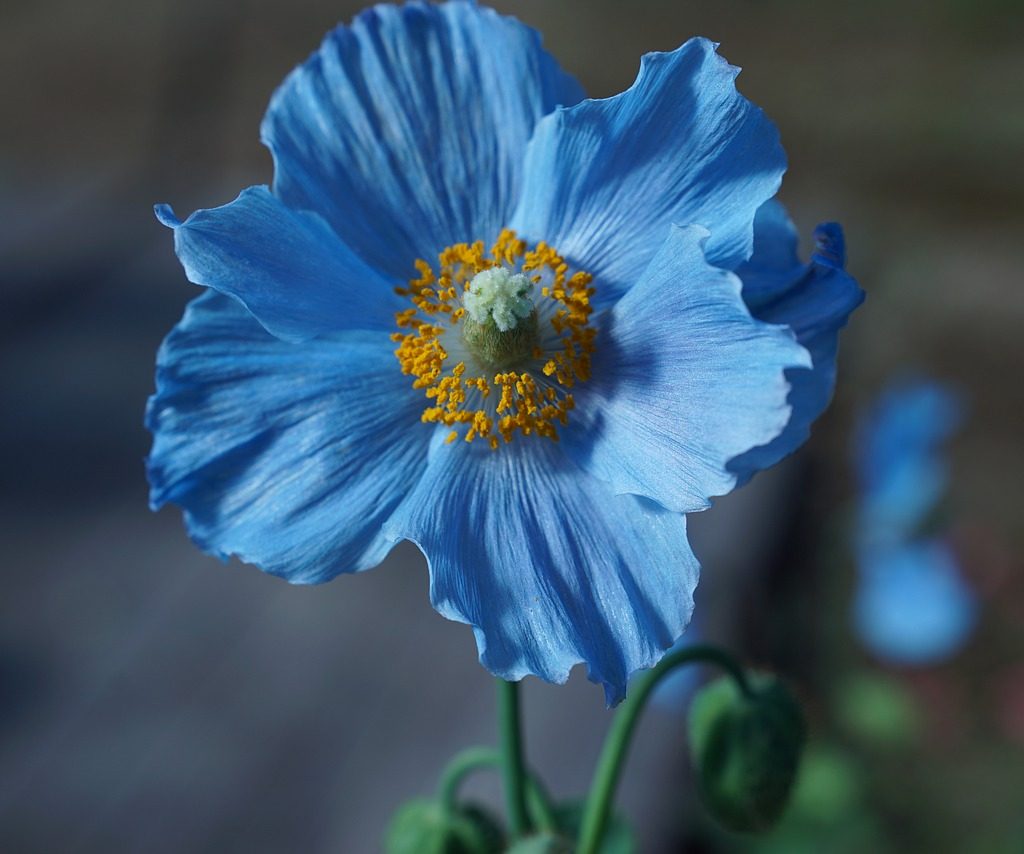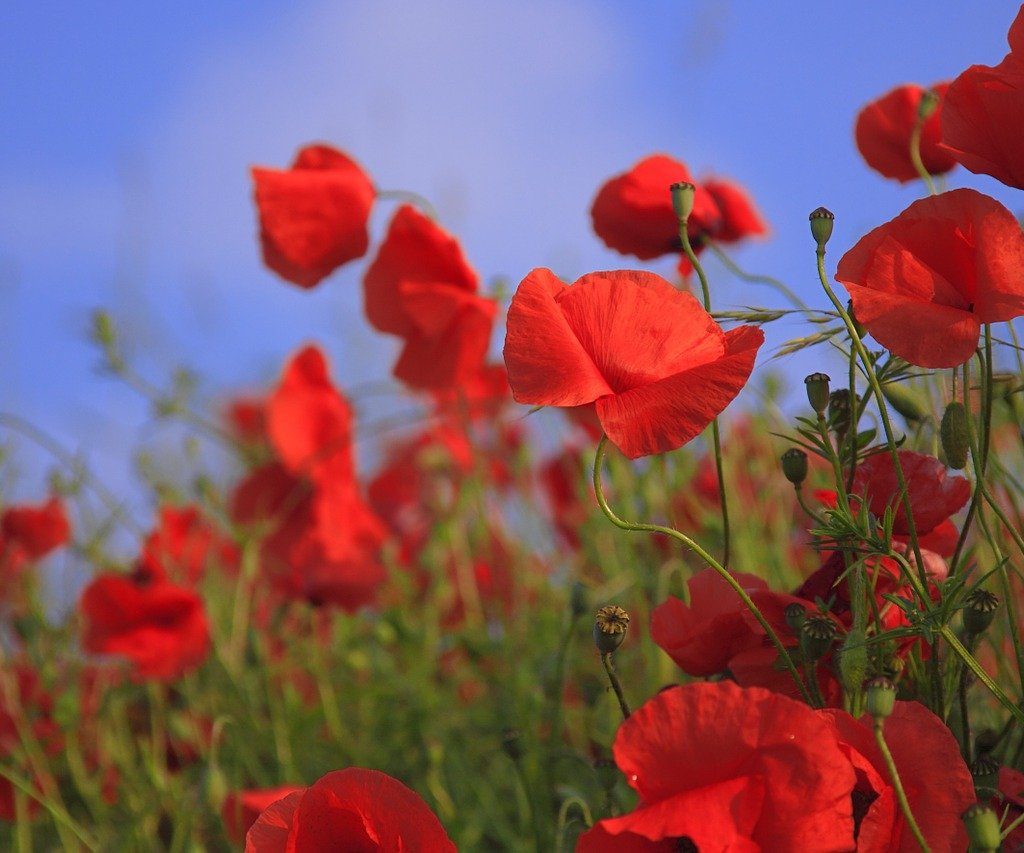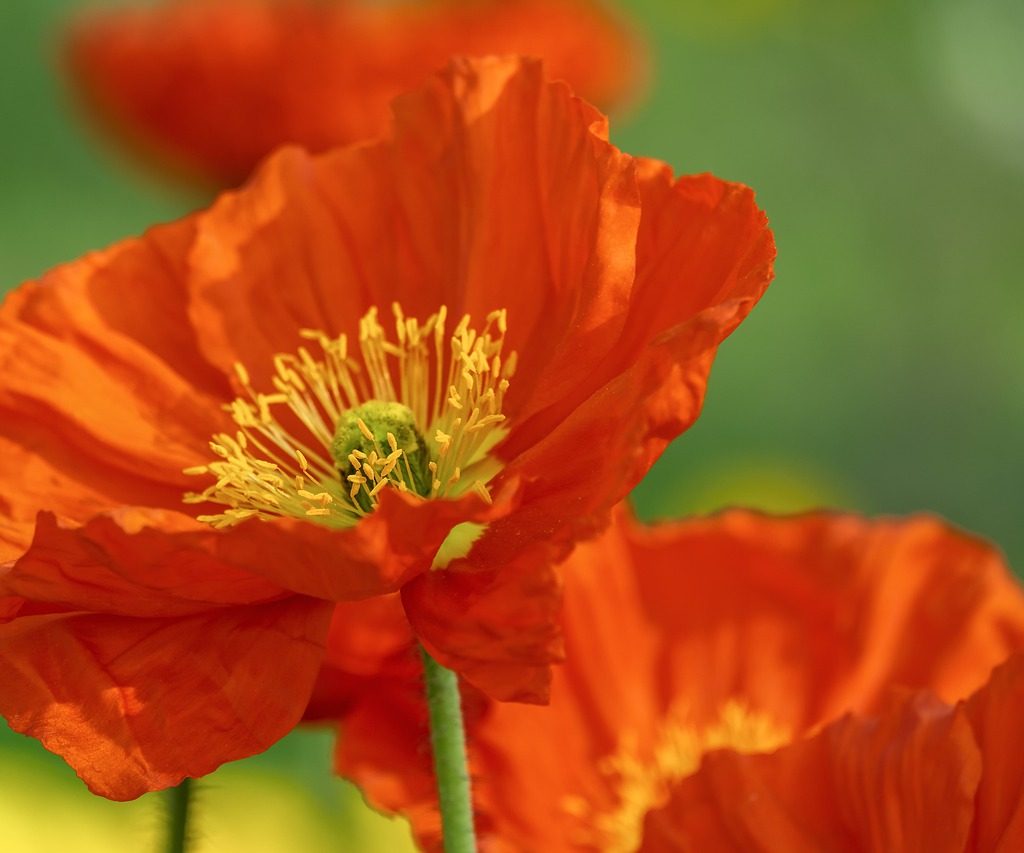Poppies are a beautiful and fun addition to any garden, and, as they’re wildflowers, they’re often included in wildflower seed mixes for wildflower gardens. They’re also a great addition to cut flower gardens, and they’re easy to dry for year-round decorations. Whether you find yourself with a seed mix that includes poppies or want to grow these lovely flowers on their own, you’re in the right place. We’ll tell you everything you need to know about poppies, from what varieties are popular to how to plant and care for them.
Varieties of poppies
The classic image of a poppy is the bright red Flanders poppy, but there are plenty of other varieties to choose from as well. Flanders poppies are the red variety of corn poppy, which comes in white, pink, and yellow as well.
California poppies are popular in the US. They’re typically a sunset orange color and are well suited to fields and open plains as well as gardens. California poppies are voracious spreaders, though, and are considered potentially invasive in some locations, including Hawaii and Alaska.
Oriental poppies are known for their larger blooms. They come in a range of colors, including red, white, pink, and orange. Many oriental poppies also have a black mark at the base of their petals, which makes an interesting contrast to the bright, bold colors of the flower.
Himalayan and Iceland poppies are two of the more difficult varieties to grow. Neither are particularly heat tolerant, although they bloom in late spring and summer. This combination makes them unsuited for regions with hot summers. Iceland poppies can be found in orange, yellow, red, and white, while Himalayan poppies are known for their striking blue color.

Planting poppies
Like most wildflowers, planting poppies is quite easy. You don’t need to worry about depth or spacing, simply sprinkle the poppy seeds across your garden soil. If you want a more orderly-looking garden, you can place them individually, but you still don’t need to cover them. Poppies germinate quicker and easier when they’re exposed to sunlight. A light dusting of soil over the top of them or gentle pressure to push them partially into the soil is enough to keep them in place.
Soil quality is also something you don’t need to worry about. Poppies will tolerate poor, average, and rich soil. The important thing to consider when planting poppies is sunlight. They need at least six hours of full sun per day, so choose a section of your garden with full or partial sun.
Plant your poppies in spring for the best results. Typically, you can begin planting them a week or two before the last frost of the year. Poppies can withstand some frost, but if you live in an area that’s prone to late-season freezes, then you may want to wait until just after the last frost to be safe. If you live in an area with a warm or mild winter, you can also plant poppies in mid to late fall.

Caring for poppies
While the seeds are germinating and sprouting, it’s best to keep the soil moist but not soaking wet. After your poppies are established, though, you can cut back to watering once a week. Poppies are fairly drought tolerant, and in many areas will subsist off of rain alone. In drier regions or during times of drought, weekly watering is enough to keep them alive. A good rule of thumb is to water your poppies when the top 1 or 2 inches of soil are dry.
Since poppies are often planted through seed scattering, crowding can become an issue in some cases. If your poppies have grown in thickly, and you start to notice a decline in health, then thinning them can help. Remove excess poppies so that each flower has roughly 6 inches of space on each side.
Poppies can also benefit from deadheading, which is the process of removing dead or dying flowers before they fall off on their own. This has two benefits. Firstly, it can encourage more flowers to form to replace the ones that have been removed. The second benefit is that it decreases self-seeding. Poppies will produce many seeds, which contributes to how much they spread. To control this spread, remove the flowers before they form seed pods.

Pests and diseases
Poppies are incredibly resilient, and most pests and diseases don’t bother them. You may see some damage from small insects, such as aphids. In severe cases, they can be controlled with sprays, either artificial pesticides or natural sprays such as capsaicin or neem oil. Poppies can develop some fungal and bacterial infections, which are mainly caused by poor water drainage or wet leaves. Avoid overwatering your poppies and try to water them below the leaf level to keep their leaves dry.
Poppies are beautiful perennial wildflowers and are among the easiest plants to grow and care for. No matter where you live, you’re likely to see good results with poppies. As long as they have plenty of sun and some water, poppies will grow just about anywhere. You can even bring them indoors in the form of cut or dried flowers that will brighten up any room.


